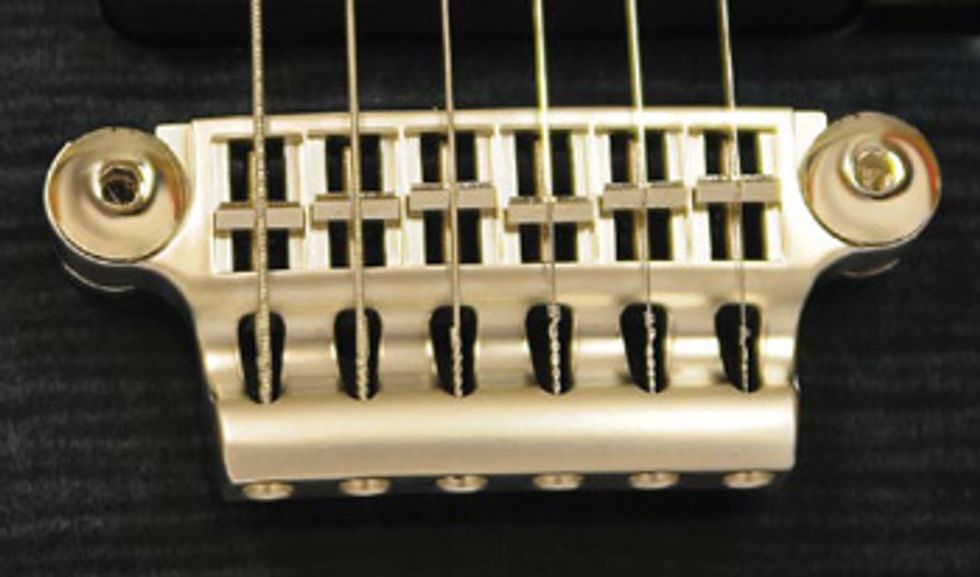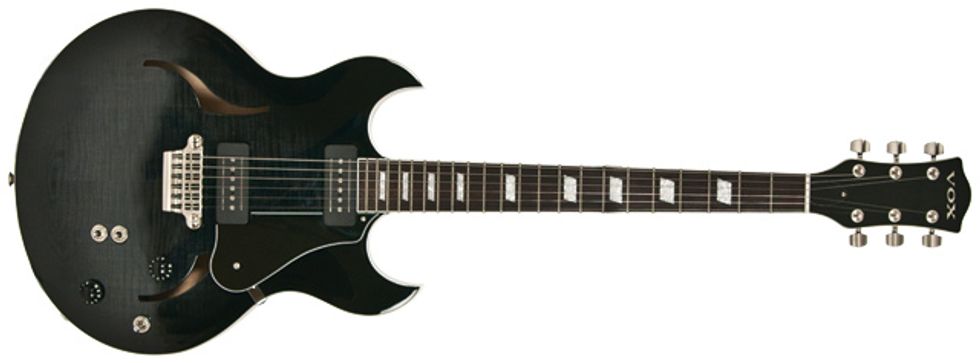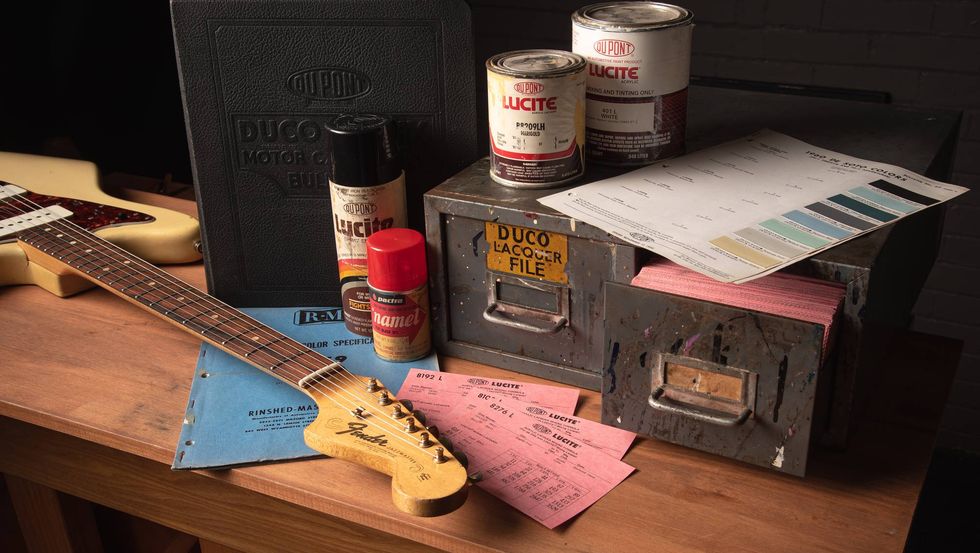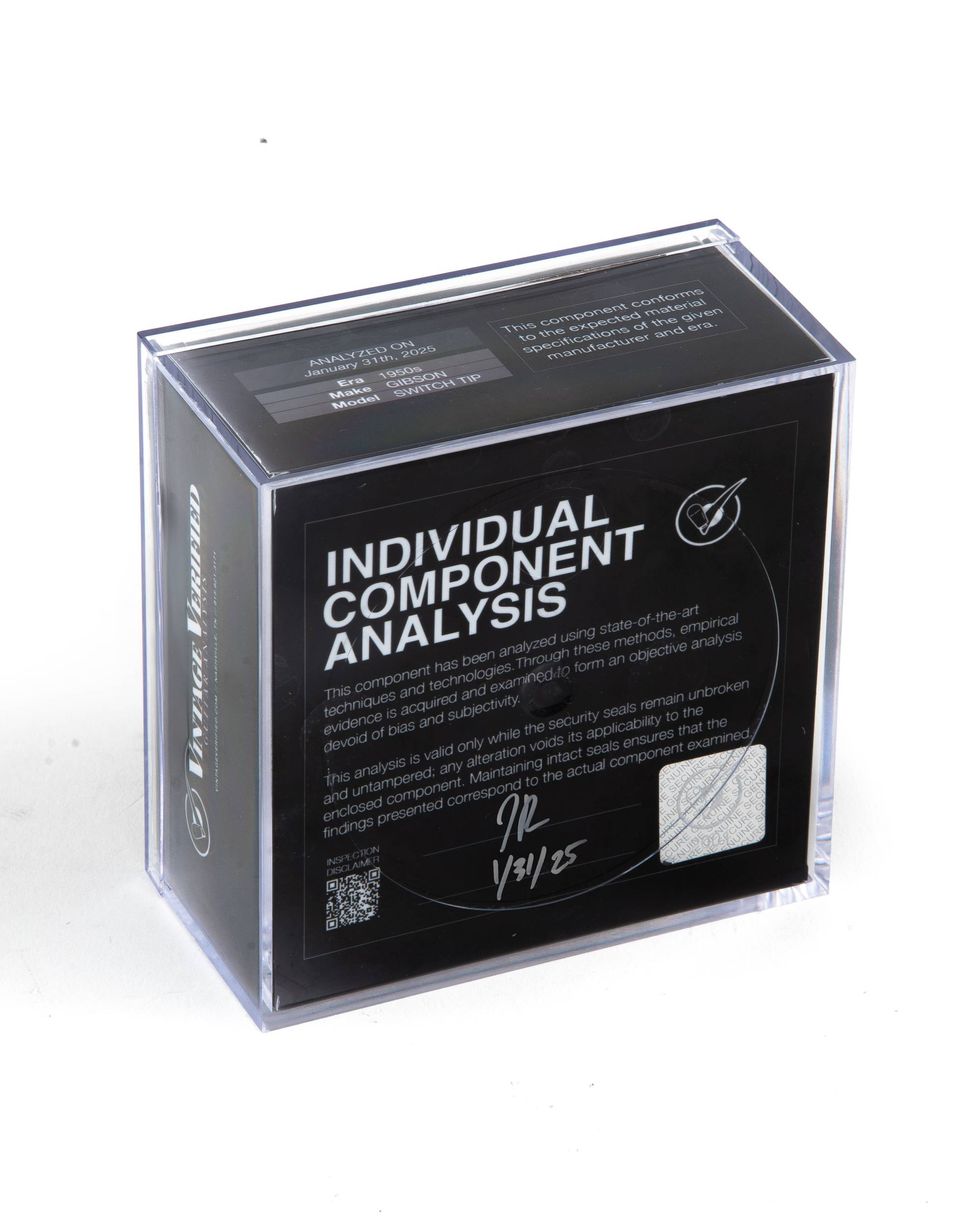| Download Example 1 neck pickup in single-coil mode | |
| Download Example 2 bridge pickup in P-90 mode | |
| Download Example 3 both pickups together in humbucking mode | |
| All clips recorded with Electroplex Rocket 22 amp mic'ed with Shure SM57 into ART Tubeamp studio into GarageBand | |
So it might have come as a surprise when Vox largely abandoned its own obvious design and tone heritage with the premium semi-hollowbody Virage line in 2007—forgoing vintage visual motifs and sounds for a fresh look and highly playable, sonically versatile instruments. Capitalizing on the success of the Virage line, Vox recently introduced the less expensive, but equally cool Virage II series of guitars. We checked out the HDC- 77, a semi-hollow 6-string that is at once traditional and modern, with its unusual construction and high-performance electronics and hardware.
New Construction Concept, Top Craftsmanship
With its maple-laminate top, dual cutaways, and semi-hollow design, the HDC-77 owes an obvious debt to Gibson’s ES-335. But it also incorporates several innovative deviations that mark a departure from the design template established by Gibson’s semi-hollow standard-bearer. Like its big brother the Virage, the HDC-77 is curved along both the length and the width of the body, making it exceptionally comfortable to hold when seated or standing. The body is routed from a solid piece of mahogany so that two chambers (which are visible through the soundholes) are formed on either side of two lengths of wood in the center that Vox calls tonebars (not to be confused with the tonebars found on a Gibson L-5). The laminated maple top and back are then mounted to this mahogany frame—a design that is said to allow the guitar to vibrate more freely and enhance the guitar’s tone. And the inversely carved neck heel allows for unencumbered access to the guitar’s highest frets and increases the wood-on-wood area at the joint.
The HDC-77 is equipped with smartly designed hardware too. Vox’s MaxCon-nect cast aluminum bridge is ultra-light—at under two ounces—which helps transfer string vibration to the body and improve sustain and resonance. It’s also micro-adjustable, enabling more precise intonation than on many standard bridge designs. Vox’s cast S-shaped Super Smooth tuners are also a nice touch. These countered machine heads fit snuggly under the fingers, allowing easier gripping than conventionally shaped machine heads—especially good for those with sweaty hands.
The HDC-77 is also outfitted with Vox’s brilliant CoAxe pickups, which are built around single and twin coils that can be selected via a 3-way switch—effectively giving each pickup three distinct voices. There’s also a standard 3-way switch for accessing each pickup alone or both at once. That means the HDC-77 is a beast of ridiculously broad tonal possibilities.
Overall, our Korean-made test model of the HDC-77 was very well built. The fret ends were smooth, the binding tidy, the fretboard markers cleanly inlayed, and the black-burst finish evenly applied to reveal the flamed, book-matched top and back.
The guitar was not without minor imperfections. Some of the pores on the dark rosewood fretboard were filled with a mysterious white substance, perhaps an unintentional artifact of the manufacturing process, and more time could have been devoted to sanding the guitar’s innards. Those small matters aside, the guitar looks and feels very well made.
 Comfortable and Capable
Comfortable and CapableAs a hardcore traditionalist, I was on the fence about some of the styling and design aspects of the HDC-77. But the doubts faded the minute I removed the guitar from the case and marveled at its remarkably light weight. At just over 6.5 pounds, it’s about two pounds lighter than most center-block 335-style designs. The guitar did indeed feel exceedingly comfortable to hold, and it was very easy to tune it up to pitch—and keep it there.
Unplugged, the guitar had impressive resonance and sustain, thanks perhaps to its innovative build and hardware. It also possessed an unexpected snap that’s likely due to the scale length of 25.125", compared to a traditional semi-hollow’s 24.75". The HDC-77’s neck is low profile, but not pencil-thin, and it was easy to play barre chords for an extended period without experiencing much in the way of fret-hand fatigue. The 22 jumbo frets made bending strings easy anywhere on the neck. And thanks to the substantial carve at the neck’s heel, I found myself venturing up to the highest regions of the fretboard to work with fresh-sounding chord voicings.
I explored the HDC-77’s amplified personality by plugging directly into an Electroplex Rocket 22 and a Fender Pro Junior. While the guitar’s electronics might sound a bit complicated on paper, they proved totally intuitive to operate. The single Volume and Tone provided an excellent range of expression. Highs weren’t lost when I decreased the volume, and the Tone knob had an agreeable and useful taper.
It was difficult to find a stinker among the HDC-77’s multitude of electronic settings. The single-coil positions of both pickups shimmered nicely on a clean amp setting, and the hotter, more P-90-styled position had the guitar growling like an old Les Paul Junior. The humbucking position of each generated a tone that, while not quite as massively present as a good old PAF, was heavy and harmonically detailed. On both pickups, it was easy to roll back the tone knob to get that Clapton-esque woman tone. And the bridge pickup seemed hot enough for high-gain shredding situations.
The Verdict
Vox’s HDC-77 is a guitar that benefits from a smooth marriage of tradition and innovation. It would be an excellent instrument for a serious intermediate player, given the reasonable price tag. But with its broad spectrum of tones, the guitar would also be right for a studio musician, a home recording enthusiast, or a player who doesn’t feel inclined to haul a boatload of axes to a gig. And it’s an instrument built in the exploratory spirit of a brand that’s responsible for some of the greatest guitar and amplifier innovations in the electric guitar age.
Buy if...
you need a wide range of tones in a single, extremely playable guitar.
Skip if...
you’re a vintage snob.
Rating...
Street $1399 - Vox - voxamps.com/guitars/series77 |













![Rig Rundown: John 5 [2026]](https://www.premierguitar.com/media-library/youtube.jpg?id=62681883&width=1245&height=700&quality=70&coordinates=0%2C45%2C0%2C45)




![Rig Rundown: Russian Circles’ Mike Sullivan [2025]](https://www.premierguitar.com/media-library/youtube.jpg?id=62303631&width=1245&height=700&quality=70&coordinates=0%2C0%2C0%2C0)









